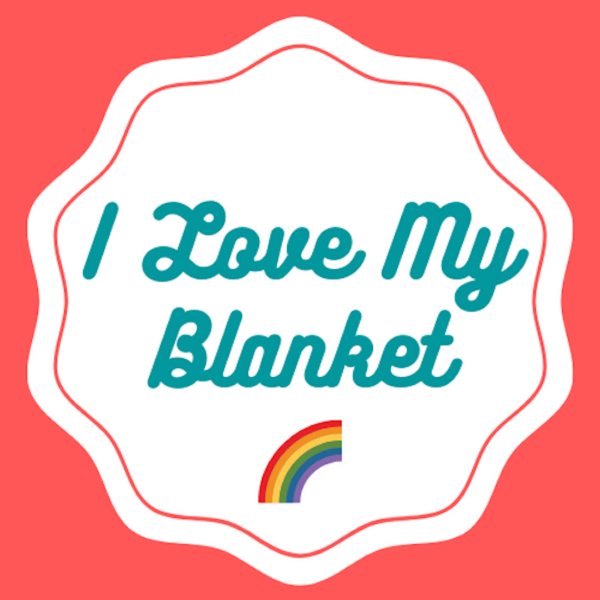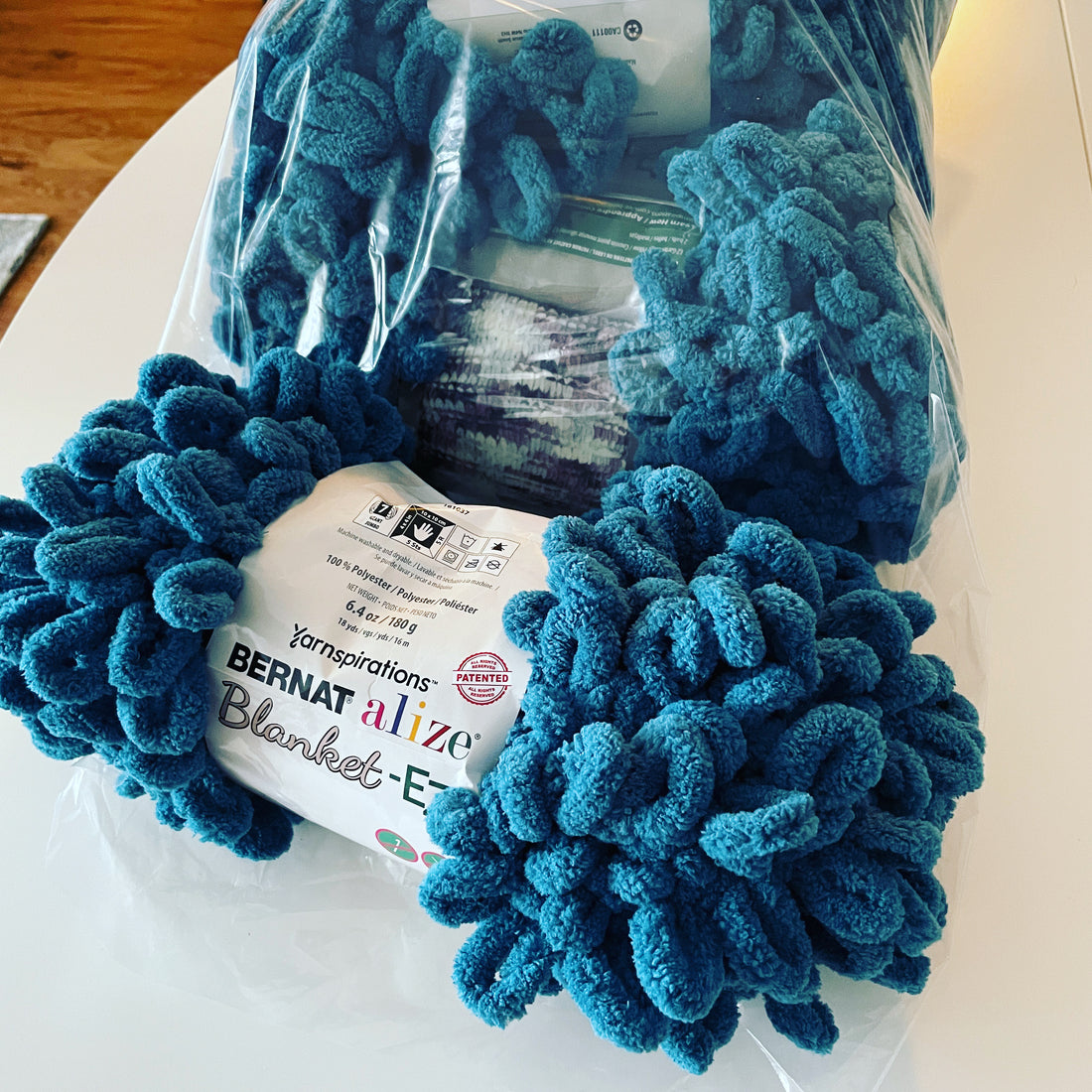
What tools do I need?
Share
One of the best features of finger knitting is the fact that it requires no special tools or machinery to complete your creative masterpiece.
Unlike standard knitting, you don't need knitting needles, so once you buy your yarn, you are pretty much ready to get started! No needles, no worrying about gauges, and no frustration about making your stitches consistent (every time I've tried standard knitting, my stitches would get tighter and tighter until it was almost impossible to get them off the needles!).
Having said that, different knitters have different habits, needs and preferences, and there are some optional tools you might find helpful.
SCISSORS
When it comes to cutting your loop yarn, household scissors will do, really. But sometimes we all want things that are task-specific and a little bit special.
These detail scissors from Singer have great reviews and and are a small and efficient addition to your loop yarn kit:
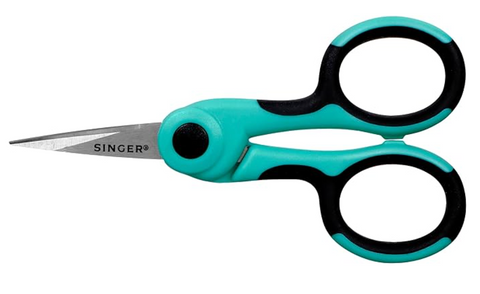
If you prefer something a bit more decorative and sentimental, you might like the traditional look of these gold crane scissors:
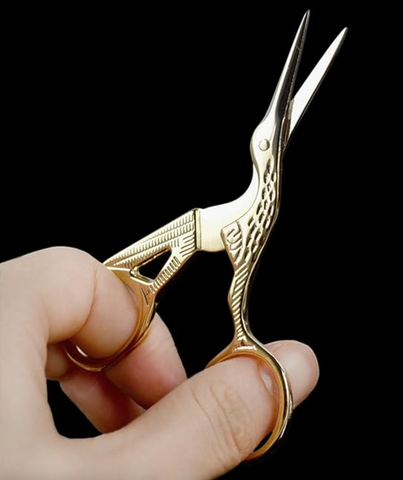
STITCH MARKERS
You don't have to use stitch markers when you finger knit, but they can be very useful when knitting chunky cables, or marking your starting spot for each row when knitting in the round (on hat or rug patterns).
If you don't want to spend money on markers, you can use safety pins, or even hair or plant clips. One of the benefits of stitch markers, though, is that they come in different colours - which is useful for keeping track of multiple stitches.
Stitch markers tend to come in huge quantities! You are really only likely to need a small number per loop yarn project - but if you do other knitting or crochet work, larger quantities may appeal to you!
This set of 12 jumbo markers is a good amount to get you started:
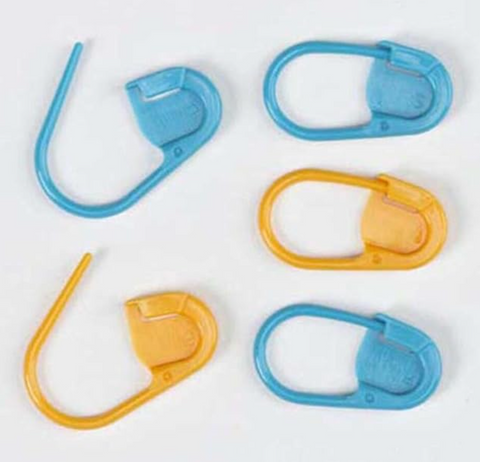
NEW: I've added my own handmade Stitch Markers & Charms to my shop! Click here to check them out!
CROCHET HOOK
When it comes to tying and weaving in your cut ends of loop yarn when you've finished your project, you can definitely just use your fingers, but depending on your dexterity, you may find it both tricky and tiresome to do so (especially for projects like my Oval Rag Rug, where the yarn is tightly bound together).
Some finger knitters just prefer using a hook to knit instead of their fingers for their entire projects!
I use a US-K 6.5 mm size aluminum crochet hook to weave in my ends - this choice was somewhat arbitrary - when I was buying some yarn, the retailer was offering free crochet hooks as an add-on to your purchase, so I just chose the largest size they were offering.
I find it works well enough to suit my needs, but a bit larger size would work well too. You want a hook large enough that your yarn will catch under the hooked end, but not so large that you can't fit it under tightly woven stitches.
This Susan Bates Aluminum hook is very similar to the one I use:

Don't like aluminum? This Susan Bates Luxite Plastic Crochet Hook has a great reputation and a low price:

STORAGE BAG
Loop yarn is such a large size, that transporting knitting projects to work on them away from home can be a bit more challenging. On the other hand, chenille polyester is super compact-able, so it's definitely possible to squish it into a smaller size and fluff it back up again later.
This yarn bag organizer from Homest is stylish, but also large enough to carry more than a few skeins of loop yarn.
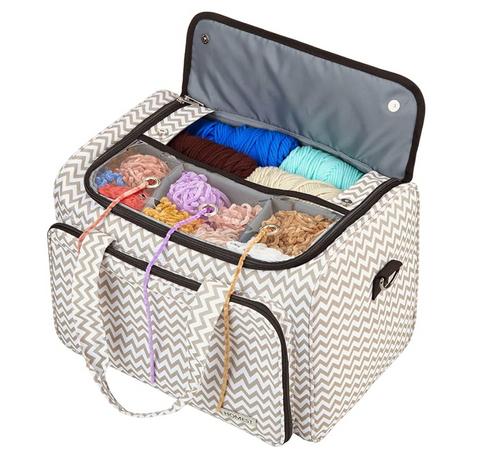
Do you have any favourite knitting accessories or tools that you use when loop yarn knitting?
UPDATE (10/8/2022): Check out our new blog post: New tools and charts for loop yarn knitters.

